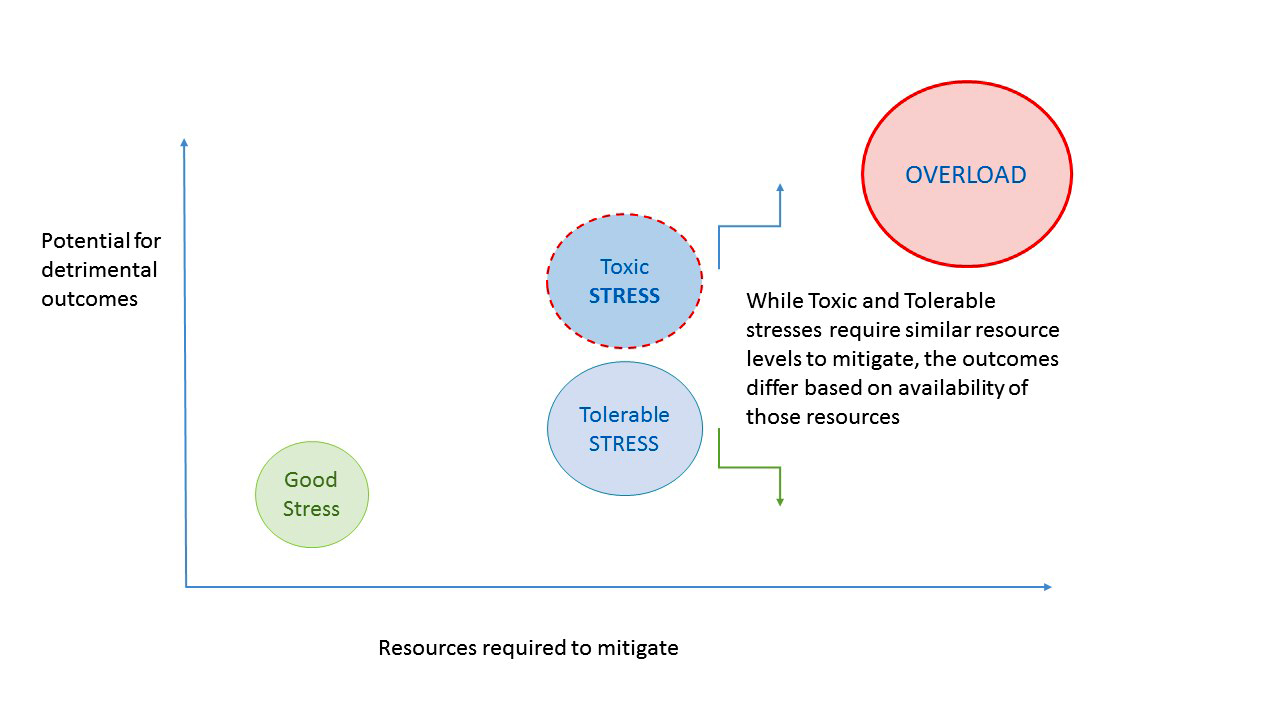Table of Contents
Definition / general | Essential features | Terminology | Diagrams / tables | Building a healthy organizational culture | Building and supporting individual resilience | Employee selection and deployment for resilience | Financial sustainability and healthy practices as a component of organizational resilience | Healthy relationships with clients, vendors and the public enhance resilience | Develop resilient ways of thinking | Videos | Additional references | Board review style question #1 | Board review style answer #1 | Board review style question #2 | Board review style answer #2Cite this page: Hassell LA. Building resilience in the workplace. PathologyOutlines.com website. https://www.pathologyoutlines.com/topic/managementlabbuildingresilience.html. Accessed April 19th, 2024.
Definition / general
- Resilient work environment and culture is one that is capable of responding to a variety of stresses without compromising effectiveness
- Organizational resilience is "the ability of an organization to anticipate, prepare for, respond and adapt to incremental change and sudden disruptions in order to survive and prosper" (BSI: What is Organizational Resilience? [Accessed 18 January 2021])
Essential features
- Proactive, regular assessment of organizational strengths, weaknesses, opportunities and threats (MindTools: SWOT Analysis [Accessed 13 January 2021] )
- Regular review of risks or threats to assess readiness, as well as conducting drills to identify and close performance gaps (MindTools: Risk Analysis and Risk Management [Accessed 13 January 2021], Chron: How to Conduct a Hypothetical Disaster Drill [Accessed 13 January 2021])
- Right people in the right jobs
- Individual resilience contributes greatly to organizational resilience
- Financial sustainability with reserve capacity
- Healthy external or outward focused relationships
- An ability to create, invent and discover unknown markets
- Competitive in the marketplace through being both progressive and flexible
Terminology
- Stress management
- Employee engagement and commitment
- Strategic planning and disaster preparedness
- SWOT (strengths, weaknesses, opportunities, threats) analysis
- Healthy organizational culture
Diagrams / tables
Building a healthy organizational culture
- Transparency of motives and goals, openness and humility throughout organization
- Alignment of interests of stakeholders, employees, owners, clients
- Environment of accountability and personal responsibility
- Freedom for risk taking, decision making within established bounds
- Fierce organizational commitment to do it right
- Uncompromising integrity in all things
- Willingness, even eagerness, to learn from mistakes
- Pursuit of collaboration, integration, holistic thinking and activity
- Courage in the face of setbacks or difficulties
- Reference: Ethix: Eight Traits of a Healthy Organizational Culture [Accessed 13 January 2021]
Building and supporting individual resilience
- Promote and offer stress reduction strategies, such as wellness, exercise or other healthy living tools
- Offer or provide direction to resources for managing or resolving individual stresses that impact the working environment (childcare options, counseling services, etc.)
- Provide growth and career development pathways
- Maintain positive work environment amid stressful circumstances
- Engage employees with larger picture of organizational goals and mission and help align their daily activities with that mission
- Implement and follow a plan to increase communication during times of stress or disaster (SHRM: Communicating with Employees During a Crisis [Accessed 13 January 2021])
- Celebrate successes and milestones, both individual and organizational
Employee selection and deployment for resilience
- Hiring and onboarding are 2 of the most important actions of organizational leaders
- Assess stress / risk levels of each position in organization to ensure healthy match of individual talents and affinities
- Cross training and backup structures critical in key positions
Financial sustainability and healthy practices as a component of organizational resilience
- Sound accounting and budgeting principles are followed
- Budgets are reasonable for operations and include allowances for reserves, replacement costs and other long term plans
- Financial reports are prepared and reviewed regularly by those with fiduciary responsibility (board, officers, etc.)
- Reference: MGMA: Principal Principles - Critical Accounting and Financial Concepts for Healthcare Leaders [Accessed 13 January 2021]
Healthy relationships with clients, vendors and the public enhance resilience
- Achieving and maintaining organizational trust via consistent performance, alignment of goals and methods with public and partners
- Accountability for decisions and outcomes
- Responsive to criticism and other feedback
Develop resilient ways of thinking
- Resilient organizations prioritize reliability and are sensitive to possible threats; focus on the possibility that something could go wrong (Weick: Managing the Unexpected - Sustained Performance in a Complex World, 2007)
- Resilient organizations make a deliberate effort to create a complete picture of the work environment despite complexity; encourage diversity in perceptions so that assumptions can be challenged
- Leadership, senior management and staff are aware that their decision making can affect the entire organization (Weick: Managing the Unexpected - Sustained Performance in a Complex World, 2007)
- Resilient organizations show a commitment to a resiliency mindset that recognizes things can go wrong but challenges can be overcome
- Resolution focuses on minimizing harm
- Setbacks may be learning opportunities and a motivating force for improvement
- Resilient organizations value their staff by empowering them to make critical decisions during a crisis; senior leaders are present to reinforce behaviors and to help fix critical issues
- Regular SWOT analysis is a useful means to assess overall capacity and vulnerabilities, risks and challenges
- Strengths are those things where your organization and people excel
- Weaknesses are your organizational vulnerabilities, points where you lack depth, readiness or awareness
- Opportunities are existing or future events, circumstances or technologies that enable you to improve, grow or otherwise fulfill organizational goals
- Threats are new technologies, competitors, social shifts or other factors that could foil your progress towards organizational success
- Reference: CQ Net: Organizational resilience - What Is It and Why Does It Matter During a Crisis? [Accessed 13 January 2021]
Videos
Resilience in the workplace
How to give an effective performance review
How to use SWOT analysis
Value and range of risk assessment
Employee selection to drive organizational culture
How trust drives everything in an organization
Resilience, well being and performance in the workplace by Derek Mowbray
Additional references
- Forbes: How To Build A Positive Company Culture [Accessed 13 January 2021], Ray Williams: Building Resilience for Individuals and Organizations During a Crisis [Accessed 13 January 2021], BSI: Organizational Resilience Index [Accessed 13 January 2021], BSI: Organizational Resilience [Accessed 13 January 2021], Dahl: Optimize Your Life! The One-page Strategic Planner, 2003, Collins: Good to Great - Why Some Companies Make the Leap and Others Don't, 2001, Covey: Speed of Trust - The One Thing That Changes Everything, 2008, Engemann: Business Continuity and Risk Management - Essentials of Organizational Resilience, First Edition, 2011, Weick: Managing the Unexpected - Sustained Performance in a Complex World, Third Edition, 2015
Board review style question #1
In the pursuit of resilience in a laboratory, which of the following would be considered counterproductive or even destructive of the ability to respond to a crisis?
- Arranging affiliation agreements with child care services and personal fitness coaches that employees can access at reduced rates
- Providing content rich feedback to employees in performance evaluations that cover areas for improvement as well as kudos for progress and successes
- Holding occasional disaster drills that cover scenarios likely to be experienced in the region of the lab's operations
- Leaders who walk around and regularly correct personnel handling or processing specimens that are not covered in standard operating procedures
- Cross training key personnel involved in IT and data processing
Board review style answer #1
D. Leadership should be present in an organization to support and resolve problems and empower employees to make decisions. Their presence to address issues and educate can be valuable but failure to adjust procedures that are incomplete or engendering a lack of confidence in an employee's ability to make decisions in their position is potentially destructive to resilience.
Comment Here
Reference: Building resilience in the workplace
Comment Here
Reference: Building resilience in the workplace
Board review style question #2
In preparing for a strategic planning session, your organization surveys employees to assess their view of the organization and the environment. Several employees note that the organization has a rigorous sense of integrity and determination to do things right. In organizing this for your SWOT analysis, which category would this statement fit best?
- S
- W
- O
- T
Board review style answer #2
A. S stands for strengths; a sense of integrity and determination to do the right things are both features of a healthy organizational culture that should enable an organization to be better positioned to succeed amid stresses. In SWOT analysis, the first 2 components, strengths and weaknesses, are inward looking, while OT, opportunities and threats, are both outward looking.
Comment Here
Reference: Building resilience in the workplace
Comment Here
Reference: Building resilience in the workplace
Back to top




